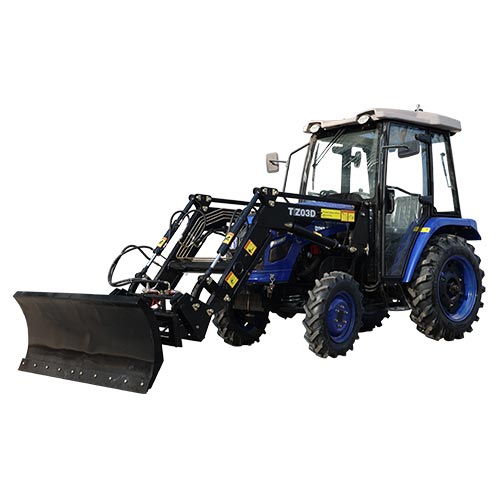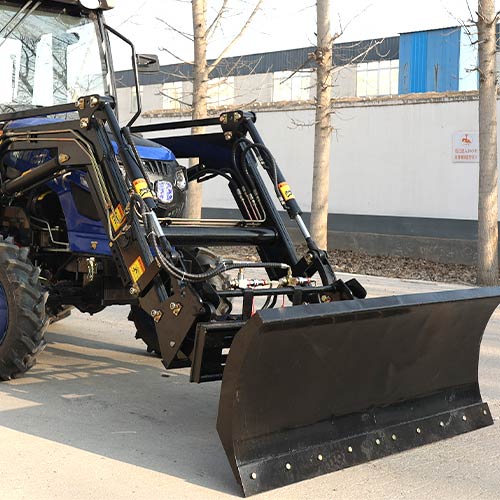Introduction

In the realm of construction and engineering, bulldozers stand as titans of earthwork, their powerful blades carving paths through mountains, clearing forests, and shaping the very contours of our world. These rugged machines, with their immense strength and unwavering determination, have played a pivotal role in transforming landscapes and propelling the wheels of progress.
History and Development
Early Beginnings
The first bulldozer was developed in the 19th century, but it was during World War II that they truly came into their own. Used for clearing land and building fortifications, they proved their worth and became a staple of heavy construction.
Technological Advances
Over the years, bulldozers have become more powerful, efficient, and versatile. Modern bulldozzers are equipped with advanced hydraulic systems, powerful engines, and computerized controls that make them more user-friendly and effective.
Environmental Considerations
With growing awareness of the environmental impact of construction, bulldozer manufacturers are now focusing on creating machines that are more fuel-efficient and have a lower carbon footprint.This shift towards more sustainable construction equipment is a positive step in reducing the industry’s overall environmental impact. By prioritizing fuel efficiency and lower carbon emissions, bulldozer manufacturers are not only meeting the demands of environmentally conscious consumers, but also contributing to global efforts to combat climate change.
Table: Evolution of Bulldozer Technology
| Era | Technology | Environmental Impact |
|---|---|---|
| Early 1900s | Basic design, steam-powered | High |
| World War II | More robust, used in war efforts | Medium |
| Post-War Years | Internal combustion engines, more power | Medium |
| 1970s-1980s | Introduction of hydraulic systems | Medium |
| 21st Century | Computerized controls, focus on fuel efficiency | Low |
Types and Applications
Standard Bulldozers
These are the most common type of bulldozer, with a large, flat blade at the front for pushing and a ripper at the back for breaking up hard ground.Bulldozers are essential pieces of equipment for construction and earthmoving projects, known for their strength and versatility on job sites. Whether clearing land, grading roads, or excavating trenches, bulldozers are a powerful tool in the hands of skilled operators.
Crawler Bulldozers
Crawler bulldozers, also known as track loaders, are designed for use in muddy or uneven terrain. Their tracks provide better traction and reduce ground pressure.Crawler bulldozers are commonly used in construction, mining, and forestry industries due to their ability to navigate challenging conditions with ease. Their versatility and power make them essential equipment for various heavy-duty tasks.
Specialty Bulldozers
There are also a variety of specialty bulldozers designed for specific tasks, such as snow removal, fire fighting, or land clearing.Some bulldozers are equipped with special attachments like plows, water tanks, or brush rakes to handle these unique jobs with precision and efficiency. These specialized machines play a crucial role in various industries and are essential for completing specific tasks effectively.
Table: Types of Bulldozers and Their Uses
| Bulldozer Type | Use Case |
|---|---|
| Standard Bulldozer | General construction, land clearing, grading |
| Crawler Bulldozer | Uneven or soft terrain, swampy or muddy areas |
| Specialty Bulldozer | Specific tasks like snow removal, fire fighting |
Operation and Safety

Training and Certification
Operating a bulldozer requires specialized training and certification. Bulldozers are complex machines that can be dangerous if not operated correctly.It is important for operators to understand the various controls and functions of a bulldozer in order to safely and effectively maneuver the machine. Proper training ensures that operators are able to handle different terrains, obstacles, and working conditions. Certification also demonstrates that an operator has met certain standards of competency and safety. Overall, operating a bulldozer requires a high level of skill and responsibility to prevent accidents and ensure a successful job outcome.
Safety Precautions
Safety should always be a top priority when operating a bulldozer. This includes regular maintenance, proper use of safety equipment, and adherence to safety protocols.Familiarize yourself with the manufacturer’s guidelines and attend any required safety training sessions. Always inspect the bulldozer before each use to ensure it is in proper working condition. Use seat belts, helmets, and other protective gear at all times while operating the equipment. Follow proper operating procedures and never take unnecessary risks that could jeopardize your safety or the safety of others. Remember, safety first, always.
Environmental Impact
Bulldozer operators should be aware of the potential environmental impact of their work and take steps to minimize damage to the surrounding ecosystem.Operators should be properly trained in best practices for operating heavy machinery in environmentally sensitive areas, such as wetlands or forests. They should also follow any regulations or guidelines set forth by local authorities to protect the natural habitat.
Maintenance and Repair
Routine Maintenance
Regular maintenance is crucial for keeping a bulldozer in good working order. This includes checking fluid levels, inspecting the blade and tracks, and performing minor repairs as needed.
Heavy-Duty Repairs
Major repairs, such as engine overhauls or transmission replacements, should be performed by trained professionals to ensure they are done correctly.
Preventative Measures
Taking preventative measures, such as regular maintenance and using the right type of fuel, can help to extend the life of a bulldozer and reduce the need for major repairs.
Table: Bulldozer Maintenance Checklist
| Task | Frequency | Importance |
|---|---|---|
| Fluid Level Check | Before Each Use | High |
| Blade Inspection | Weekly | Medium |
| Track Inspection | Weekly | Medium |
| Engine Maintenance | As Needed | High |
| Safety Check | Before Each Use | High |
Conclusion
Bulldozers are powerful machines that play a crucial role in shaping the landscape and building the future. From their early beginnings to the modern, high-tech models we see today, they have come a long way. With proper operation, maintenance, and consideration for the environment, bulldozers will continue to be an essential tool for construction and development for years to come.
FAQs
What is a bulldozer used for?
Bulldozers are used for a variety of tasks, including clearing land, grading terrain, pushing over structures, and moving large amounts of earth.
How have bulldozers evolved over time?
Bulldozers have evolved from basic steam-powered machines to modern, computerized models with advanced hydraulic systems and powerful engines.
What types of bulldozers are there?
There are several types of bulldozers, including standard bulldozers, crawler bulldozers, and specialty bulldozers designed for specific tasks.
What safety precautions should be taken when operating a bulldozer?
Safety precautions include obtaining proper training and certification, using safety equipment, and adhering to safety protocols.
How often should a bulldozer be serviced?
A bulldozer should be serviced regularly, with some checks, such as fluid level checks, performed before each use, and others, like engine maintenance, done as needed.

